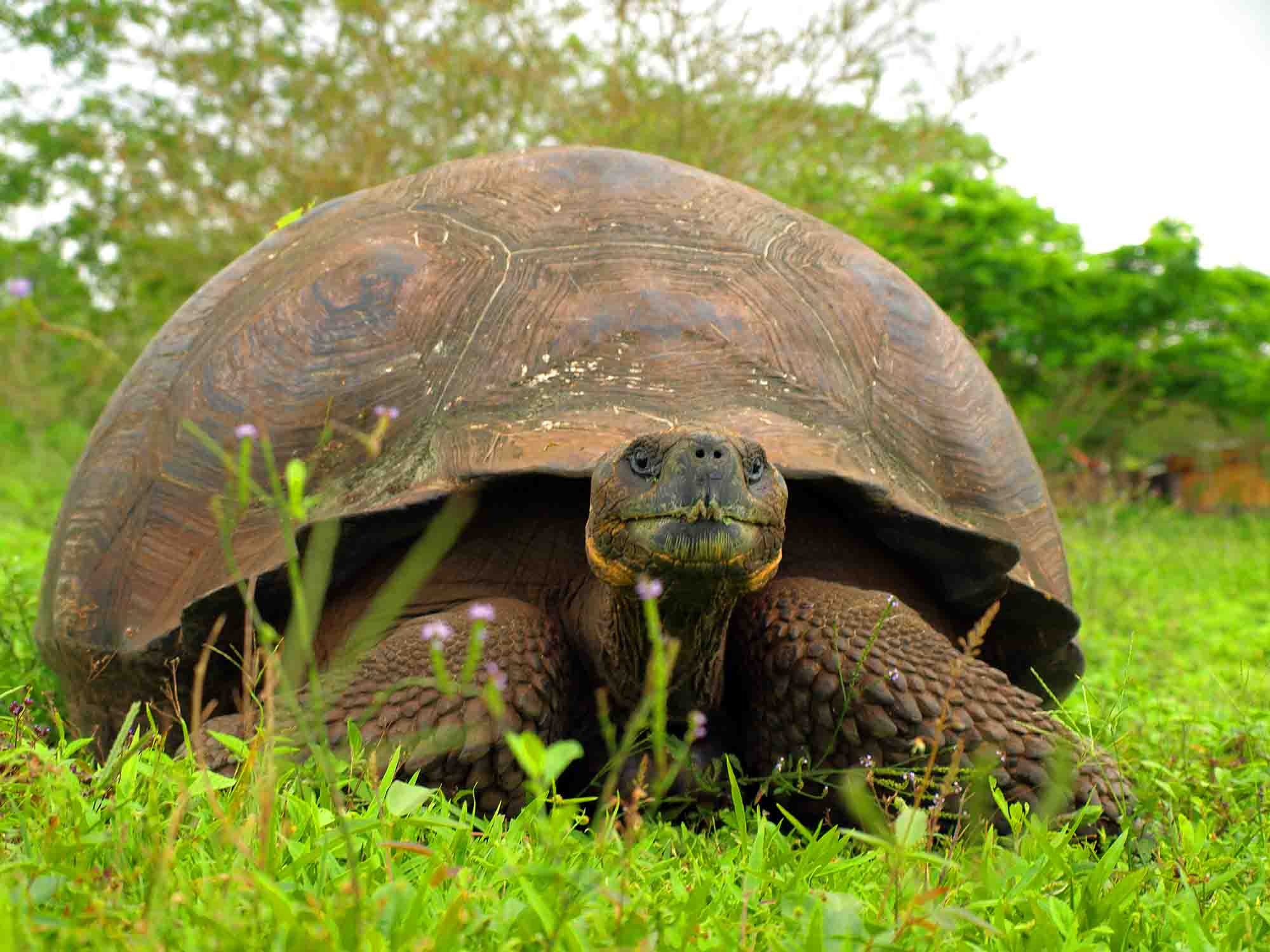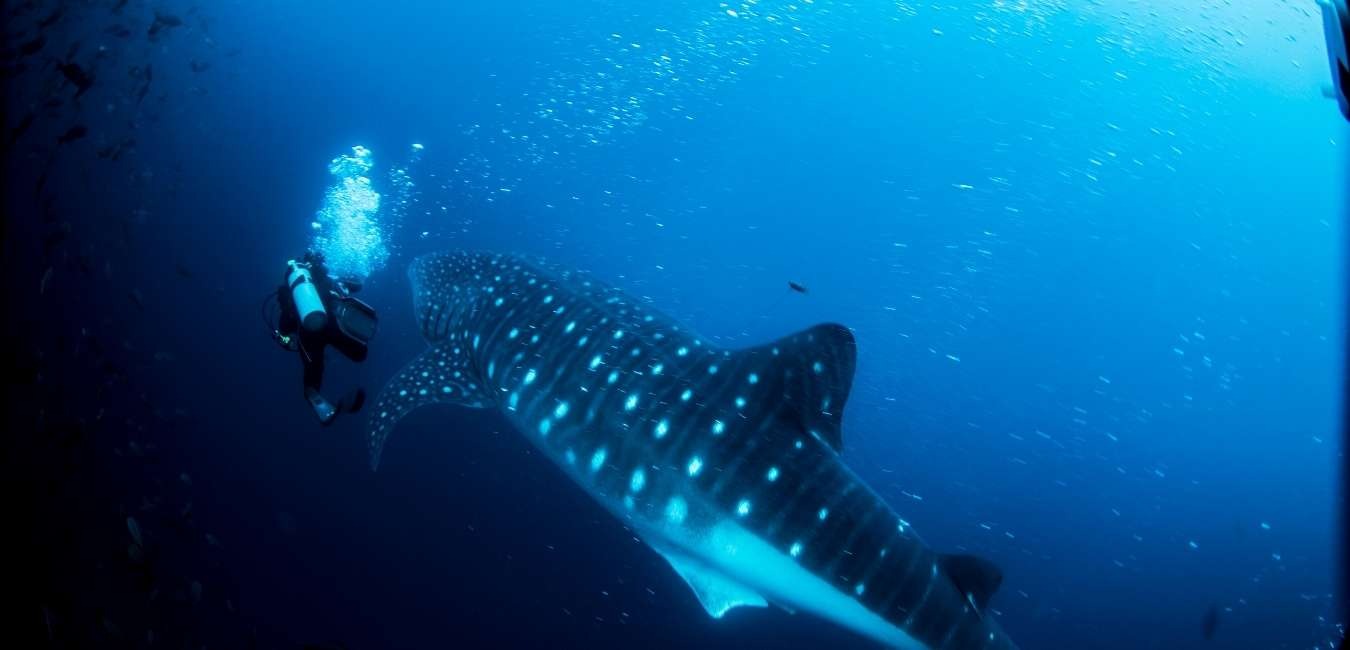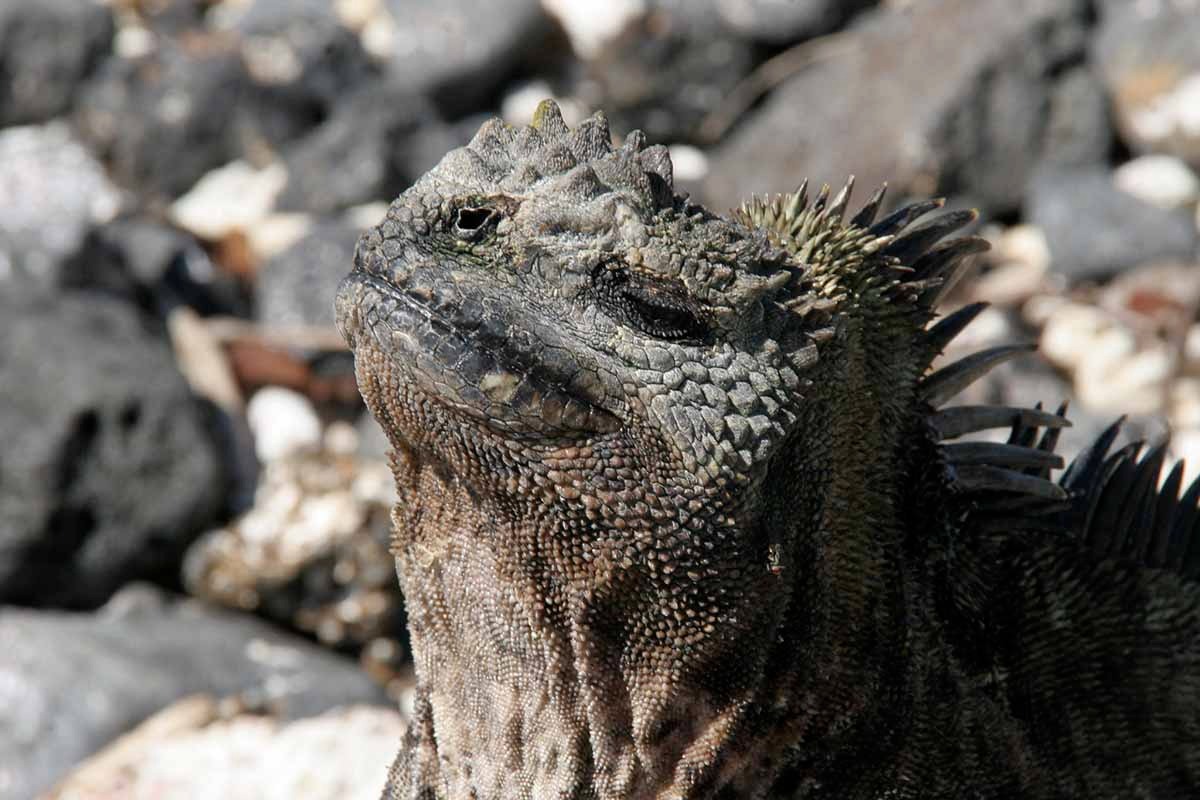5 day boat trip to the South Islands of Galapagos Nemo Catamaran II
Transfer to the yacht after arrival at the Baltra airport.
Santa Cruz Island: Bachas Beach
Cocktail. Lunch service and navigation to Bachas Beach, Santa Cruz
*Nature walks Snorkeling.
The name spanglish means "barges" and was used to describe the ships that were lost offshore during World War II. This is a popular landing spot. There's a lovely swimming beach with a lagoon behind and a longer beach that can be used for wildlife watching and walking. There are often great blue herons in the saltwater lagoon behind, as well as small waders like semi-palmated and plovers. Both beaches are great nesting places for green sea turtles. They leave footprints in the sand at the beach's back, particularly from November through February. There is plenty of space to explore the beach at your leisure.
Briefing. Navigation to South Plaza and dinner service
Breakfast service. Dry landing. Visit South Plaza. * Nature walk. Deep-water snorkeling
South Plaza Island
South Plaza's dry landing is the first step. The island is surrounded by a rocky trail that circles it. It displays a combination of coastal and dry vegetation zones. South Plaza is home to one of the most extensive populations of Land Iguanas anywhere in the Galapagos. Once you land, the iguanas are everywhere. These iguanas are larger than the average yellow-brown land iguana and eat the fruits and pads of the prickly cactus. South Plaza also houses Marine Iguanas that live along the coast, and Hybrid Iguanas. Their fathers are Marine Iguanas while their mothers are Land Iguanas. The walk continues along the sea cliffs and you will often see Swallow-tailed Gulls as well as Frigatebirds. Red-billed Tropicbirds. Brown Pelicans. Blue-Footed. Masked Boobies can also be seen. A colony of Bachelor Sea Lions is visible just below the shore.
Santa Fe Island
Lunch service. Navigation to Santa Fe Dry landing Nature walk*
One of the most stunning coves in the Galapagos is located on Santa Fe Island. It is located in the southeast part of Galapagos and is approximately 2 1/2 hours away from Santa Cruz, and 3 hours from San Cristobal. Santa Fe was created by an uplift, rather than a volcano. This gives the island a flat surface instead of the conical shape that is typical for other islands. A panga boat ride through the beautiful turquoise lagoon is the first step to Santa Fe. Once you arrive at the Galapagos, you will be introduced to one of the many colonies of sea lions. While bulls vie for beach master, cows enjoy the sun. It's quite an amazing sight! You can easily approach Galapagos Hawks by following the loop trail that runs around the island. Santa Fe is home of the endemic Land Iguanas. These iguanas, which are large and beige-to-coconut brown in color, resemble small dinosaurs. The cove below is stunning when you reach the summit.
Guide briefing. Navigation to San Cristobal and dinner service
Breakfast service. Visit Cerro Brujo* Panga boat exploration rides. Wet landing. * Nature walk* Deep-water snorkeling
Witch Hill
Cerro Brujo was one of Charles Darwin's first stops. It is a stunning white sand beach with brown pelicans, blue-footed boobies and sea lions. Cerro Brujo, an onshore version nearby Kicker Rock is a striking, eroded tuff con.
Kicker Rock is not a landing site. These rocks, also known as Leon Dormido, are found off the coast from San Cristobal. This channel is formed by two vertical rocks that rise 500 feet above the ocean. The natural monument is a popular spot for cruises because of the numerous Tropicbirds Frigates and Boobies in the air. The almost crystal clear waters beneath the sea offer an amazing display of colorful tropical fishes and invertebrates.
Lobos Island
Lunch service and navigation to Lobos Island* Wet landing. Wet landing. Deep-water snorkeling.
*Lobos Island is known for its fur sea lions population and sea lions. There will be nesting areas for the great Frigatebird as well as a few blue-footed boobies. The breeding center will explain, in simple terms, the natural phenomena that created Galapagos Islands. This is the geology, as well as the natural processes that led to these amazing islands.
Guide briefing. Navigation to Espanola Island and dinner service
Breakfast service. Dry landing. Spanning the island of Espanola, Suarez Point*
Suarez Point
Suarez Point is located at the western tip Espanola. It offers spectacular wildlife viewing, including Sea Lions, Sea Birds, and the largest Marine Iguanas in the Galapagos. This is one the most beautiful places in the Galapagos. It is home to a wide range of wildlife. There are numerous Sea Lions, large, colorful Lava Lizards, and Marine Iguanas along the beach. Follow the trail to the edge of the cliff and you will see Masked Boobies nesting in the rock formations. Just a short distance from the trail is a Blue-Footed Boobie nesting area.
Lunch service. Panga boat exploration rides to Gardner Bay. Wet landing. Gardner Islet, Osborn Islet. Nature walk. Deep-water snorkeling Swimming.
Gardner Bay
Suarez Point is 45 minutes away by boat from Gardner Bay. The beach is white sand and the colony of sea-lions can be found here. There are many options for scuba diving and swimming here. You will find both resident and migrant wildlife, including colorful Marine Iguanas and Espanola Lava Lizards. Also, you'll find Swallow Tailed Gulls and Blue Footed Boobies, Galapagos Hawks and a variety of Finch. You can snorkel at Osborn Islet and take a panga ride on Gardner Islet.
Guide briefing. Navigation to Santa Cruz Island and dinner service
Breakfast service. Visit Santa Cruz Highlands* Dry landing. Check out and depart from the airport.
Santa Cruz's highlands are home to incredible areas of vegetation. Visit the private estate, "Las Primicias." This reserve is the best place to see the giant turtles of Santa Cruz Island. They can be viewed from close range.




Included
- Scheduled visits and activities with a professional bilingual guide
- All meals on board, snacks, purified water, tea and coffee
- Accommodation in standard cabin / bunk with private bathroom and air conditioning
- Assistance 24/7 during the trip
Not Included
- Air tickets to / from Galapagos from / to Quito, Guayaquil or combined route
- Entrance to the Galapagos National Park US $ 100 p.p. (cash in the Islands)
- Galapagos Control Card US $ 20 p.p. (at the airport before check-in)
- Soft and alcoholic drinks on board; personal expenses, extras and tips guide and crew (cash)
- Rent of snorkeling equipment and wet-suits on board (in cash)
- Travel insurance with medical, cancellation and other unforeseen coverage
- Other services in Continental Ecuador and not specified in the program
Highlights
- Visit Giant tortoises in the highland forests of Santa Cruz Island
- Walk along one of the worlds best beaches for widlife viewing (Gardner Bay)
- Walk amongst nesting waved Albatross on Española island
- Snorkel and swim with sea lions, turtles, manta rays and myriads of tropical fish